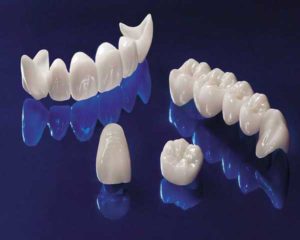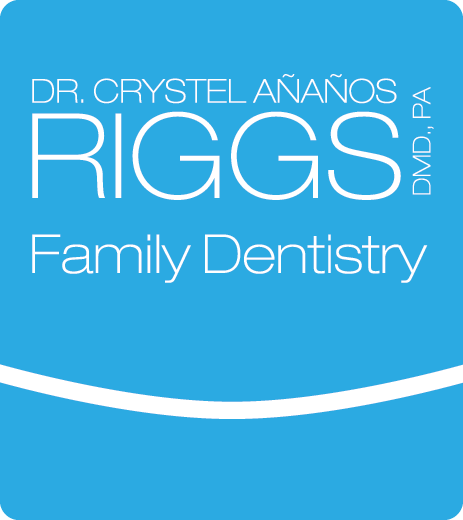Crowns (Caps) or Bridges Stuart FL

Crowns and bridges are commonly used to restore damaged or lost tooth structure, or decayed teeth. They can help bring back the natural look of your smile, especially with today’s esthetic materials available. When teeth have more filling than tooth, or if there is damage that has resulted from decay, or a fracture, it weakens the tooth and a crown is often placed to save the tooth. This is especially common after a root canal therapy is done, or trauma to the tooth. A crown can cover the entire tooth above the gum line, and give patients the look and feel of a natural tooth. There are also partial crowns and onlays that can be done to preserve more tooth structure when a portion of the tooth is still intact. Years ago, we used to refer to the front crowns as “caps”, but essentially they are the same thing. Crowns can be made of gold or porcelain, or a combination of metal and gold. Obviously, the porcelain crowns are the more common and more esthetic crowns, typically used in the front of the mouth. If left untreated, a tooth with a large fracture or deep decay may need a root canal or worse – an extraction, due to loss of tooth structure.
A dental bridge serves as a permanent replacement for missing or damaged teeth. These restorations, typically three or more teeth long, are bonded (or cemented) onto the adjacent natural teeth and are referred to as a FIXED BRIDGE. Replacing a missing tooth can help maintain the bite, support the lips and cheeks, improve esthetics, and help with both speech and chewing. In addition, it can stabilize the adjacent and opposing teeth from tilting into a space created by a missing tooth. This can lessen the chances for gum disease to occur due to tilting or moving teeth. With proper care, a dental bridge should give you many years of use.
An optional treatment for a dental bride would be to place a PARTIAL DENTURE that is called a REMOVABLE BRIDGE. The advantage of these is that there is no surgical phase or drilling adjacent teeth needed to fabricate one of these. A common concern with a partial denture however, is that it is not quite as “natural feeling” as a bridge or an implant would be, because it has clasps around the remaining teeth that hold it in place but can still move around and on the upper, can cover some of the taste buds on the palate.
Many people are opting to have DENTAL IMPLANTS placed instead of doing a bridge, because the long-term potential for an implant is better. An implant, being made of titanium and having a porcelain crown on top, will never get decay or need a root canal where as If either of the support teeth for a bridge gets decay, it might be necessary to replace the entire bridge. An implant is the most conservative way to restore a missing tooth when considering the adjacent natural teeth.
In cases where the decay or fracture is small, particularly in the front teeth, a PORCELAIN VENEER can be done. This is a more conservative approach, that is primarily done to close spaces, repair large chips, straighten teeth or whiten teeth that have dark internal staining.
At Riggs Family Dentistry, Dr. Riggs can consult with you and suggest the most conservative option for your particular situation.

